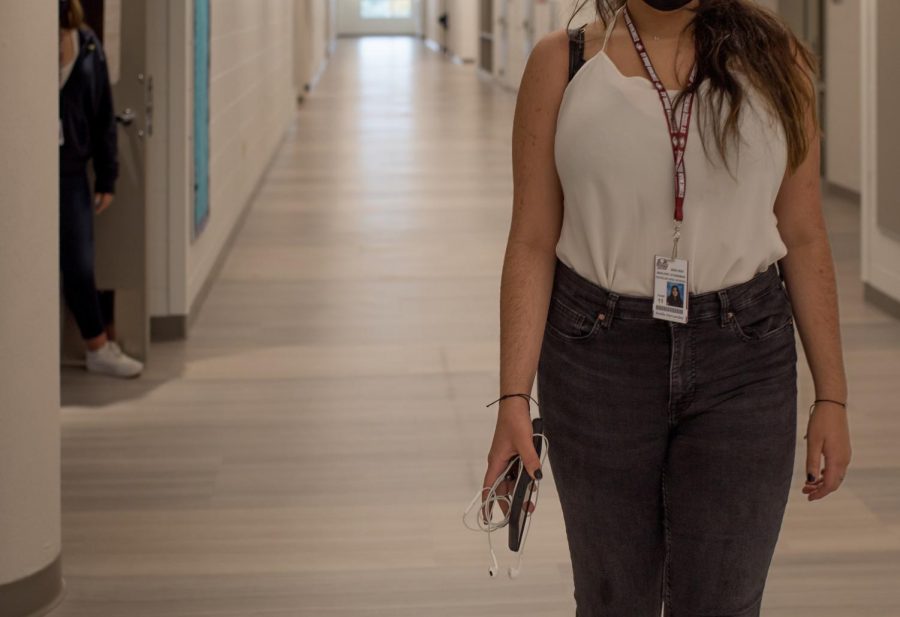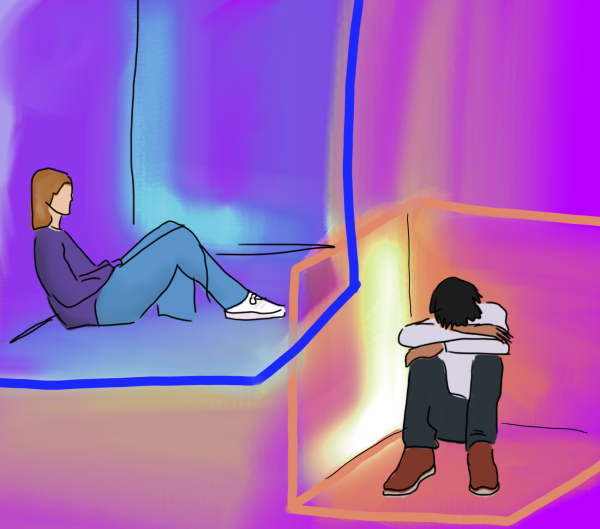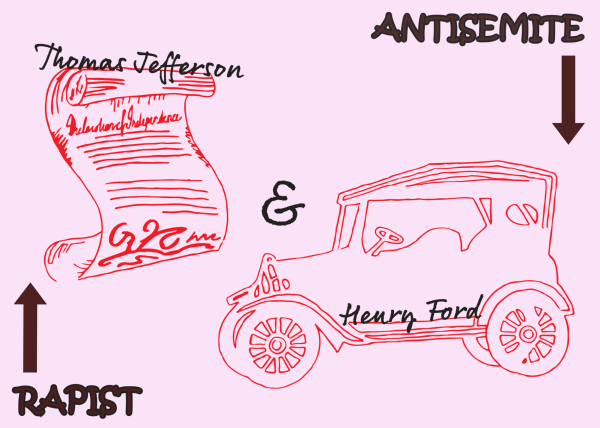[Opinion] School dress codes are misogynistic and degrading to women
Junior Arielle Hernandez walks to class in the new building wearing jeans and a tank top, exposing her shoulders. Junior Arielle Hernandez walks to class in the new building wearing a tank top and jeans. School dress codes have historically contributed to the over-sexualizing of certain body types. Photo by Mariajose Vera
Getting sent home or being phoned by the school for what one’s wearing is customary for girls in all grades. Starting in elementary school, girls can be given warnings or consequences for dress code violations for wearing tank tops and shorts. But at that age, what girls are wearing should be the least of administration’s concern.
Younger girls, especially in warm states like Florida, wear short-sleeved shirts and shorts so they feel comfortable in the heat.
Incorporating strict dress codes can cause self-consciousness about their bodies at an early age and can have sexualizing effects on girls. “Dress code enforces gender stereotypes that women ‘distract boys’ with their clothing,” a WUSA9 article written by Madeline Cuddihy in 2018 states. Additionally, telling a girl to cover up her natural body shape because it’s “distracting” encourages body dysmorphia.
What students are wearing should never be the primary worry at school. Girls are trying to get an education; however, others seem to be more worried about whether or not their shoulders are showing.
Nevertheless, they still continue with the excuses, that they are set in stone to stop distractions in classrooms and other environments. The National Center for Education Statistics states that 53% of public schools around the US placed strict dress codes in the 2015-16 school year.
Dress codes are even stricter on girls of color. In some instances, protective hairstyles such as box braids and locs are prohibited at certain schools despite their cultural significance to black women.
“These rules aren’t neutral: many target girls, and especially black girls, by regulating skirt length and headwraps,” District of Columbia’s report of school dress codes states.
Girls may even receive unfair punishments for failing to adhere to dress codes. Some of these punishments are as severe as detentions or suspensions.
In fact, on their websitethe American Civil Liberties Union states that dress codes are legal as long as they do not “treat boys and girls differently, force students to conform to sex stereotypes or censor particular viewpoints.” However, dress codes primarily seem to be aimed at restricting the type of clothing female students wear.
Furthermore, the reasoning schools provide for prohibiting certain types of clothing is mainly based upon the notion that the style or material of the clothing may make men feel uncomfortable. School dress codes often shift blame to female students. Rather than teaching boys to not sexualize their female peers, schools target articles of clothing such as leggings and yoga pants, deeming them to be “sexual,” “provocative” and “distracting” to boys although they are just pants that girls wear because they are comfortable.
By taking a female student out of class for wearing a top exposing shoulders because it is “distracting” to boys in her class, their education is put above hers. The message that this sends to young girls is that their bodies are dangerous and that it is their fault if boys objectify them.
Another key issue brought up with school dress codes is how they reinforce rape culture. Teaching girls to dress differently instead of teaching boys to respect boundaries.
With rape culture, the first question brought is, “What were you wearing?” This signifies that what girls choose to wear is equivalent to consent, and objectifies girls like they are items for the world to view.
School dress codes institute at a young age, that girls’ clothing is distracting.
Dress codes also remove a girl’s comfort and individuality. Removing the option of letting them wear what they like and feel comfortable in.
If clothing is always the concern with women, it makes them think that the only thing they have to offer the world is their looks rather than their wits, brains and personality.
This all plays into the theme that women’s first and only concern is their clothing and people’s perception of them. Enforcing a dress code should not lead to punishing or denying female students an education because of their clothing and appearance.
Your donation will support the student journalists of Marjory Stoneman Douglas High School. Your contribution will allow us to purchase equipment and cover our annual website hosting costs.

Briana Martin is a sophomore at Marjory Stoneman Douglas High School. She is a second year writer for the Eagle Eye. In her free time, Briana enjoys reading...

Sofia Schorer Kaplan is a junior at Marjory Stoneman Douglas High School and a Social Media Editor for the Eagle Eye. In her free time, Sofia likes to...

Mariajose Vera is a senior at Marjory Stoneman Douglas High School and a sports and news photographer for the Eagle eye and has been on staff for three...











